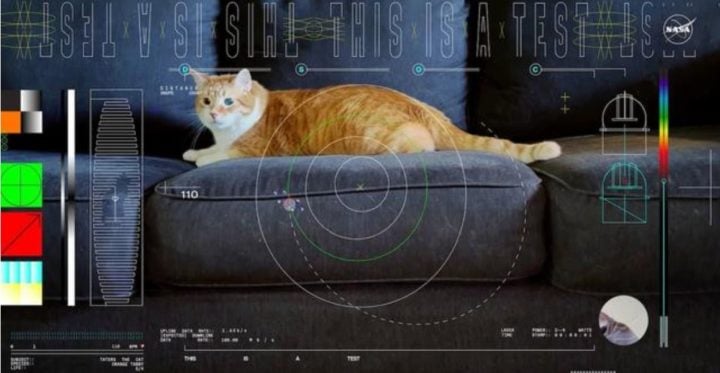고정 헤더 영역
상세 컨텐츠
본문
There has been some news recently about NASA streaming a cat video. Did it actually happen, and what is it for?

On December 11, 2023, an ultra-high definition cat video featuring an orange tabby cat named Taters was streamed from deep space, marking the first of its kind. This video stream served as a test for new NASA technology designed to transform communication with spacecraft. Image credit: NASA
Did NASA really stream a cat video across space?
The information about NASA sending a cat video across space is indeed accurate.
NASA has been performing a Deep Space Optical Communications experiment. They have streamed an ultra-high-definition video from a record-setting 19 million miles away. It’s part of an investigation of technologies needed to transmit large quantities of data to deep space. The final aim of the project is human missions beyond Earth’s orbit.
The 15-second test video features an orange tabby cat named Taters, the pet of a NASA employee. The display included graphics of technical data, along with Tater’s heart rate, color, and breed.
How was this experiment performed?
The experiment used a cutting-edge instrument called a flight laser transceiver. The signal took 101 seconds to reach Earth, sent at the bit rate of 267 Mbps – faster than some broadband internet connections. The instrument beamed an encoded near-infrared laser to the Hale Telescope in California. Here, it was downloaded, and the researchers could watch the same cat video in real-time.
The experiment will be repeated multiple times while the spacecraft travels to the asteroid belt between Mars and Jupiter. High-data-rate signals will be sent as far out as Mars’ greatest distance from Earth. The demonstration paves the way for sending complex scientific information, high-definition imagery, and video during future interplanetary missions, such as the human mission to Mars.
But why did NASA beam a cat video from space?
Communicating with spacecraft throughout the solar system involves transmitting various data forms such as commands, images, measurements, and status updates across vast distances, constrained by the speed of light. Traditionally, NASA has utilized radio signals relayed through the Deep Space Network (DSN), which consists of large antennas distributed globally in locations like California, Spain, and Australia. This setup allows continuous contact with distant spacecraft as the Earth rotates.
While radio frequency transmissions have been effective, technological advancements in spacecraft have led to increased data collection, necessitating longer transmission times. With numerous spacecraft needing access to the limited DSN antennas, this creates a bottleneck in data transmission.




